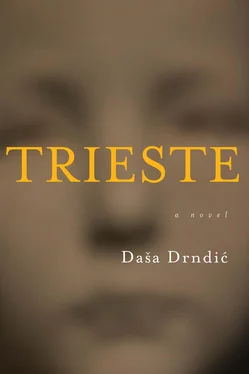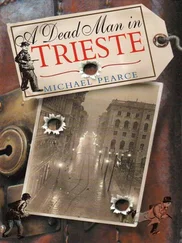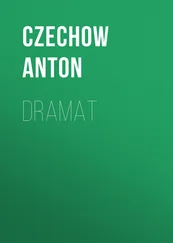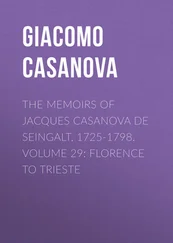North-west of Kassel and east of Dortmund is the little town of Bad Arolsen. In a baroque palace in the middle of a dense forest — deliberately hidden, one might suppose, from the eyes of the public — at Grosse Allee 5–9, is housed the largest archive for World War Two. For fifty years now in this stately home an army of 430 people arranges, copies, digitalizes, registers, analyses and classifies the documents of the Third Reich in the forlorn hope that here, maybe now, sixty-plus years after the fact, they will contribute to picking apart and laying bare at least one little piece of the past. The International Tracing Service is in Bad Arolsen, and they still receive almost half a million enquiries annually regarding the missing and the dead, those torn violently from their families, the uprooted, robbed and murdered; enquiries pertaining to children and adults, as if people do not die, as if people do not give up, as if the past doesn’t wear thin (it seems not to) the nightmares of the dead times continue to circle the world.
Few people know of Bad Arolsen’s vast functional archive, which could bring succour to millions and disturb millions were it made available to the public. Every day through the fingers of the officials of the International Tracing Service slip human lives with names, both real and fabricated, with names added or erased, lives with identities or without them, lives with meaning and those bereft of meaning, regardless, lost lives. Mislaid lives. At the baroque palace in Bad Arolsen, on huge sliding shelves marked with the names of the camps, cities, battles, regions, in alphabetical registers, lurk unfinished stories, trapped fates, big and little personal histories, embodied histories, there are people huddled there who languish, ghost-like, and wait for the great Mass of Liberation, the eucharistic celebration after which they will finally lie down, fall asleep or depart, soaring heavenward. Bad Arolsen, this vast collection of documented horror, preserves the patches, the fragments, the detritus of seventeen, yes, in digits, 17 million lives on 47 million pieces of paper collected from twenty-two concentration camps and their satellite organizations; from factories, from an array of institutions, from ghettos, from prisons, from these commands and those commands, from hospitals and hospital files (medical records), from the laboratories (experiments), from institutes, local archives, the police and police files; there is information here about executions, political, criminal and racial, about murders “for reasons of health”, everything is here that the Allied Forces collected when Germany surrendered, first to be warehoused in London, then in Frankfurt and, in 1952, finally, in Bad Arolsen.
In Bad Arolsen, in this “library” of horrors, in this alchemist’s kitchen of maniacs, little lives of little people have been foundering already for sixty years; they are waving their deportation I.D.s, their brittle, faded and cracked family photographs, their hastily penned letters, diaries, their birth certificates and marriage licences, their death certificates, sketches, poems, their coupons for food and clothing, anything that can supplant their cry, they are waving: Here we are, find us.
Information about missing children is collected and preserved in a special department in Bad Arolsen. Missing children from World War Two. The 250,000 children who went missing during World War Two. Fewer than 50,000 of them have found their families to date, what is left of their familes, their — roots. And so about 200,000 people (an entire medium-sized city) have no notion of who they are; some of them wonder, some of them wonder where they are from, while others live thinking they are someone they are not, and they do not ask themselves any questions, and they do not wonder if they might be someone other than who they are, but actually they are the very person they think they are not, a person who is altogether strange and foreign to them, until one day, sometimes after two, three, four, five, six decades, when these children are no longer children and are getting old, one day a warm breeze wafts the “happiness”, the “realization”, a white sheet of paper, a document, a stamped certificate (from Bad Arolsen) to one of these elderly children, which declares that they do not exist at all, because who they thought they were, they aren’t, they are someone else, someone who has, as far as they are concerned, never existed, and then overnight the person who has never existed for them becomes who they are. In Bad Arolsen, in that special department, they keep information about children (and infants) who were killed or taken from their non-Aryan parents to be given to “pure Aryans” to be looked after and raised. About children who are lost forever to their parents, most of whose parents no longer exist, just as these children are now non-existent for themselves.
The baroque palace in Bad Arolsen preserves, cleans, cleanses, fine-tunes in its belly a city of paper, a paper city, a papier-mâché model of Europe, of life, of compacted tragedies, gigantic tragedies squashed on to yellowed slips of paper.
But. The information kept in Bad Arolsen is accessible only to those who sit in the baroque palace in Bad Arolsen, and the staff of the International Red Cross, who have been permitted, — and only they, in the name of the victims and their children — to stroll through the renovated rooms of the International Tracing Service and nibble at warm cakes in the small cafés scattered here and there for atmosphere and increased staff productivity. The Red Cross is slow, just as the United Nations is slow, and not so very united. It takes the Red Cross between three and thirty years to find a concrete piece of information, confidential information that often leads nowhere. But they send out their cards wishing everyone a Happy 8 May, Red Cross Day, without fail, in perfect order, to those they know and those they do not, to the living and the dead, potential and genuine consumers of the services of the International Red Cross, like a little reminder, like a slogan— we are thinking of you, we are working for you. To all others, to historians, journalists, sociologists, writers, to everyone, and especially to those with a personal stake in this, whose wanderings through the historical twilight might lead them to an occasional lit path, to all of these, access to the baroque palace in Bad Arolsen is forbidden. Out of the question. The baroque palace in Bad Arolsen is fiercely guarded. With the excuse of protecting the privacy of the victims, Germany has been protecting its own reputation for fifty years. Italy’s as well. And countless other big and little, powerful and powerless countries scattered across all the continents of the planet.
Now and then a curious piece of information leaks from the palace in Bad Arolsen to the public. For example, while they were looking for the family of a Mr Weiss, workers at the International Red Cross stumbled upon the Mauthausen “Book of Death” in which it states that on 20 April, 1942, at a special celebration in honour of Hitler’s birthday, an additional 300 people were put to death at the camp, after which the guests enjoyed a festive meal.
Germany resists the opening of the Bad Arolsen archive for twenty years. The International Red Cross declares with pride that it opened its archives to the public ten years earlier, without mentioning the secrecy of the fifty years before that, during which there was time to “reorganize” the data, erase and destroy evidence that might compromise the war (in)activity of the International Red Cross. All parties protect their asses as much as they can, and so does the International Red Cross. And so does the Church, particularly the Catholic Church.
Then there is a change in April 2006. After years and years of negotiating, Germany, the United States, France, Belgium, Great Britain, Israel, Greece, the Netherlands, Poland, Luxembourg and Italy, the eleven countries which signed the agreement on establishing the protected archives of documents captured from the Third Reich in 1946, come much closer to reaching a consensus. Germany agrees that the Bad Arolsen doors should be opened, though not straight away. They call for additional meetings, more consideration, further assessment.
Читать дальше












